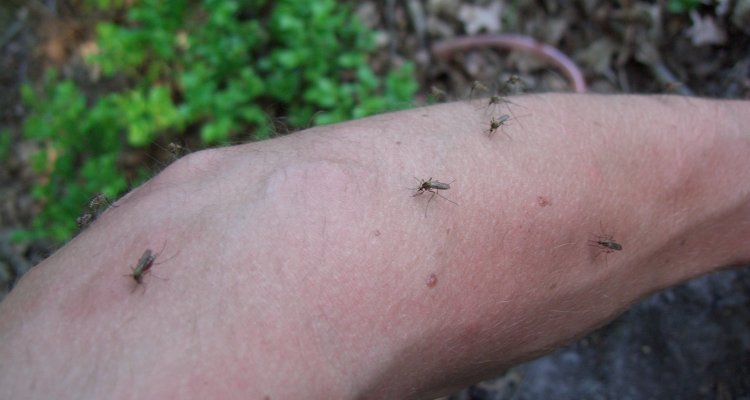
Managing biting insect nuisance
Preventing insect nuisance in wetlands, amongst others mosquitoes (Culicidae), biting midges (Ceratopogonidae) and horse flies (Tabanidae), can be facilitated by applying ecological knowledge. We develop prevention schemes and study the autoecology of biting insects.
Examples of projects
- Monitoring of biting insects and developing prevention schemes: Engbertsdijksvenen, Schiermonnikoog, Wisselse Veen, Dakhorst, Deltanatuur, Bovenlanden, Griendtsveen, Onlanden, Bethunepolder, Lingezegen
- Flight distance of mosquitoes (Vliegafstand steekmuggen)
Highlights
Monitoring of biting insects and developing prevention schemes
The restoration of former wetlands and the expansion of existing wetlands as well as the use of arable land in stream and river valleys to alleviate flooding is important to adapt to the impacts of climate change, to meet goals in achieving WFD water quality objectives, to provide increased wetland habitat for wildlife and an outdoor space for human ‘well-being’.
More and more, concerns are raised over the potential impacts that such initiatives might have on biting insect population development and its associated nuisance and disease risk. It is important to ensure that biodiversity gain and habitat restoration can advance without inadvertently elevating the risks from disease vectors.
Biting insect management always starts with monitoring of the species involved, followed by applying knowledge on the ecology of the respective species when developing potential measures that can be taken to reduce larval habitats. Furthermore communication to those involved is essential in successful insect nuisance prevention. The guideline ‘Leidraad Risicomanagement Overlast Steekmuggen en Knutten’ can be very helpful in this approach.
Major publications
- Verdonschot Piet F.M. & Anna A. Besse-Lototskaya (2014) Flight distance of mosquitoes (Culicidae): A metadata analysis to support the management of barrier zones around rewetted and newly constructed wetlands. Limnologica 45 (2014) 69– 79
- Verdonschot P.F.M. 2002. Culicidae. In: Beuk (2002) Checklist of the Diptera of the Netherlands. KNNV, Uitgeverij, Utrecht. 98-100
Publications, tools, presentations
- Verdonschot, Piet & Anna Besse-Lototskaya (2012) Leidraad Risicomanagement Overlast Steekmuggen en Knutten. Toelichting op de Leidraad; gepubliceerd: 16 Mar 2012; 60 pp.
- Verdonschot, P.F.M. 2013. Bloedzuigende insecten deel 4. Kriebelmuggen. Dierplagen informatie 4: 6-9
- Verdonschot, P.F.M. 2013. Bloedzuigende insecten deel 3. Dazen. Dierplagen informatie 1: 16-19
- Verdonschot, P.F.M. 2012. Bloedzuigende insecten deel 2. Knutten. Dierplagen informatie 4: 16-20
- Verdonschot, P.F.M. 2012. Bloedzuigende insecten deel 1. Steekmuggen. Dierplagen informatie 3: 4-7